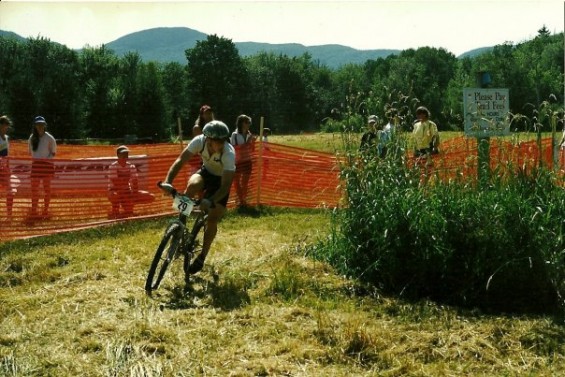
I’ve been mountain biking since 1990 and there has always been quite a bit of that change in the industry – many of which have been genuine improvements. With that thought, here are a few, once common, things that were victims of progress.
 Quill stems – These did the job fairly well and had the clear advantage of giving you a little bit of height adjustment. Of course this was of no value if the stem was used as a cable stop for the front cantilever; not an uncommon setup back then. The down side of these stems was that you’d end up having to straighten out your front end after every significant crash. We were all well-versed in the technique of holding the front wheel between our knees while pulling on the bars to realign the stem.
Quill stems – These did the job fairly well and had the clear advantage of giving you a little bit of height adjustment. Of course this was of no value if the stem was used as a cable stop for the front cantilever; not an uncommon setup back then. The down side of these stems was that you’d end up having to straighten out your front end after every significant crash. We were all well-versed in the technique of holding the front wheel between our knees while pulling on the bars to realign the stem.
Threaded headsets – Paired with a quill stem was the threaded headset. This was the method for keeping the fork and bearings together for decades. The situation with the lower headset race was about the same as it is now, but the upper race threaded down and was held in place with a large nut. Generally a couple of large, thin wrenches were required to tighten the nut against the upper race. Get things too tight and you’d end up with tight steering and eventually pitted bearing cups and races. Ultimately, it would lead to pits that would give the feeling that you had indexed steering. Not fun. Get it too loose and you’ll find your fork rattling around in the head tube about halfway into a ride. I have finished numerous rides by hand tightening the headset every half mile or so just to get home. It also required that manufacturers create forks in specific lengths so the threads would align with the bike’s head tube length. The modern threadless system is amazing in its simplicity and reliability in comparison.
One inch headsets – Mountain bikes initially borrowed the one inch standard from road bikes. This was adequate at the time, but looks utterly ridiculous by today’s standards. There was a lot of force being directed though a pretty small area at a critical location on the bicycle. I prefer the added strength and security of 1.5″ tapered headsets.
Adjustable cup bottom brackets – The advent of cartridge bearings, whether used in a traditional square-taper bottom bracket or the newer external bearing type, is a massive improvement in reliability. The old system required pin spanner, a notched wrench-like tool and a large thin wrench. It was a game of getting the tension on the bearings just right. If you rode in wet conditions very often they required quite a bit of maintenance. It was ugly.
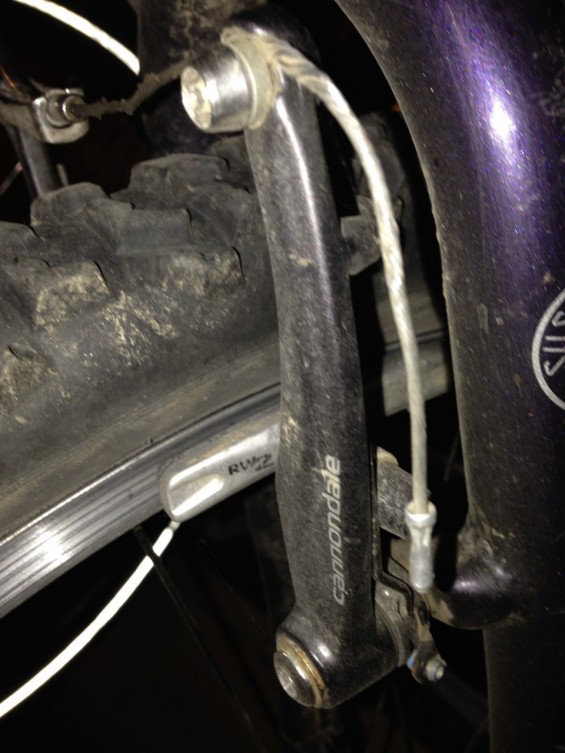 Rim brakes – I was going to just mention cantilever brakes here, but all forms of rim brakes are better left in the past, at least for mountain biking. Cantilever brakes were especially difficult to adjust because the clamping system allowed for free, unlimited adjustment in every plane. You really needed four hands to do the adjustment correctly. Even then, it was a challenge to get both brake pads aligned exactly the same. Once the pads were aligned there was also the challenge of getting the bridge cable adjusted or the positioning of the pull cable hook. I actually became quite good at adjusting cantilevers so that I could get stopping power at least as good as a set of V-brakes. V-brakes were a giant leap forward in braking over cantis, but they still had some lesser challenges with pad alignment. Both systems demanded that the wheel be absolutely true. A warp or hop of over a millimeter could affect braking. With disc brakes, I don’t think anyone gives a thought to the adjustment of their rims the way we used to back then. The worst part was when a spoke broke out on the trail, leaving you with a wheel that would rub the brake pad on at least one side every single rotation. Do enough damage and the wheel wouldn’t be able to spin at all without releasing the brakes entirely. Even when everything was working properly, you were still dragging your braking surfaces through every mud hole and stream crossing. There is no comparison at all in the stopping power we have with modern disc brakes. This may be the single biggest improvement made since I started riding.
Rim brakes – I was going to just mention cantilever brakes here, but all forms of rim brakes are better left in the past, at least for mountain biking. Cantilever brakes were especially difficult to adjust because the clamping system allowed for free, unlimited adjustment in every plane. You really needed four hands to do the adjustment correctly. Even then, it was a challenge to get both brake pads aligned exactly the same. Once the pads were aligned there was also the challenge of getting the bridge cable adjusted or the positioning of the pull cable hook. I actually became quite good at adjusting cantilevers so that I could get stopping power at least as good as a set of V-brakes. V-brakes were a giant leap forward in braking over cantis, but they still had some lesser challenges with pad alignment. Both systems demanded that the wheel be absolutely true. A warp or hop of over a millimeter could affect braking. With disc brakes, I don’t think anyone gives a thought to the adjustment of their rims the way we used to back then. The worst part was when a spoke broke out on the trail, leaving you with a wheel that would rub the brake pad on at least one side every single rotation. Do enough damage and the wheel wouldn’t be able to spin at all without releasing the brakes entirely. Even when everything was working properly, you were still dragging your braking surfaces through every mud hole and stream crossing. There is no comparison at all in the stopping power we have with modern disc brakes. This may be the single biggest improvement made since I started riding.
Semi-slick Tires – I don’t know who the genius was that decided that it would be a good idea to make mountain bike tires more like road bikes, but this was stupid if you rode your bike anywhere other than a well-packed race course. It’s such an unusual coincidence that this useless trend seemed to emerge shortly after NORBA was swallowed up by USA Cycling. You can connect those dots yourself. I’m glad to see the trend it toward bigger rubber in general and especially the advent of plus-size wheels.
Narrow bars – This was something of a fad, but it had a pretty long life in the 90s. It wasn’t enough that bars would come in 23″ lengths; we would pull out the pipe cutters and drop an inch or more off each end. Sometimes this would leave just enough room for the grips, brakes and shifters on the bar and nothing else. Not long after this trend took hold, people started clamping bar ends to the ends of their already-too-narrow bars, further crowding the cockpit. I’m not convinced that 800mm bars are advantageous, but they make a whole lot more sense than going super narrow when you’re riding rugged terrain.
Freewheels – Before cassettes were introduced, your cogs were secured to the hub in a cluster that threaded on. Every pedal stroke worked to tighten these threads and make the cogs more securely fastened to the hub. The down side was when things wore out and the cogs had to be removed. This required astronomical forces to be applied to the freewheel using a little, wimpy pin spanner tool. It was often very frustrating.
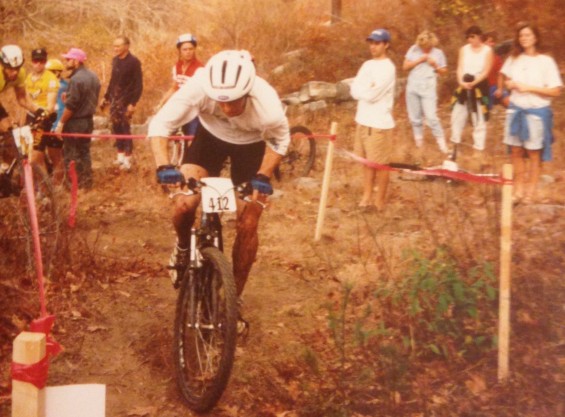
Honorable mention – Elastomer suspension, toe clips, four-finger brake levers, and bar ends.
There were many other technologies that have come and gone over the years for one reason or another. Modern bikes have come a long way from when the sport started. Many ideas, good and bad, were laid to rest so that better ones could take their place. These were just the most obvious ones that I could recall. I’m sure long time shop mechanics and riders could add some more things to this list and might even debate the ones I have here. What did I miss?

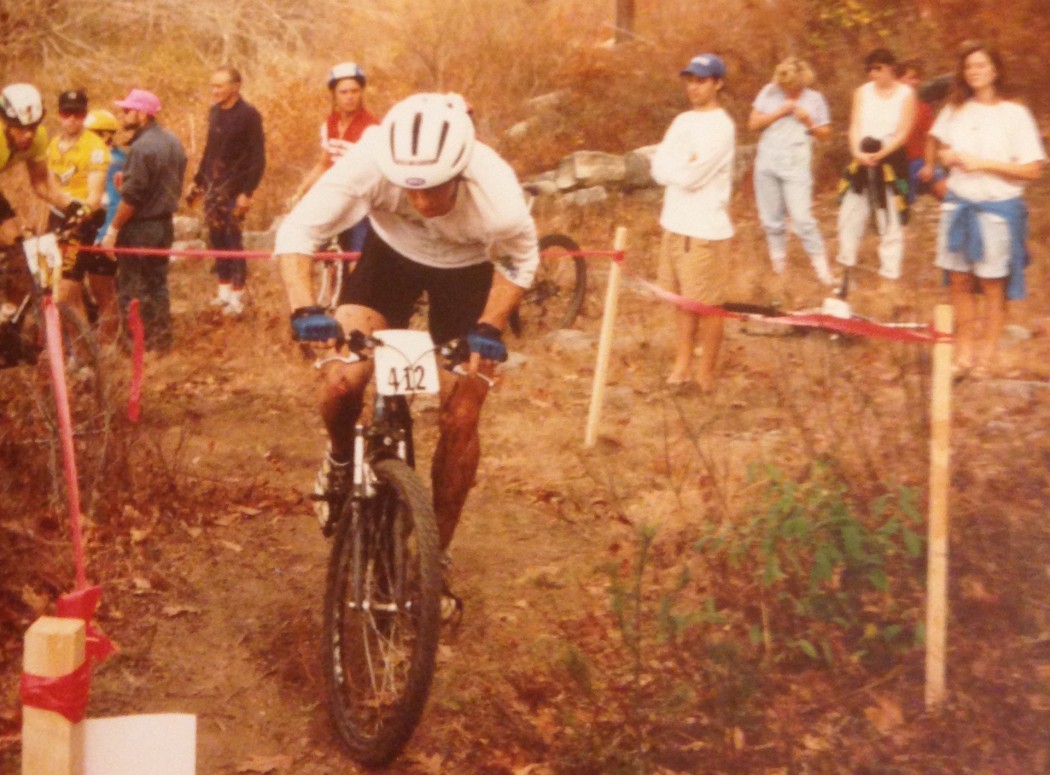


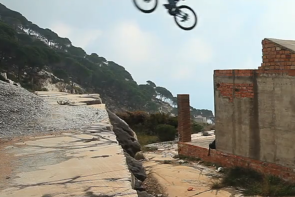
short top tubes
steep head angle
slack seat tube angles
quick release axles especially on the front
tubes
cable pull disc brakes
multi ring front chainrings
non narrowwide profile front rings
non clutched derailluers
fixed height seat post.
I actually like semi slicks like the Specialized Slaughter though.